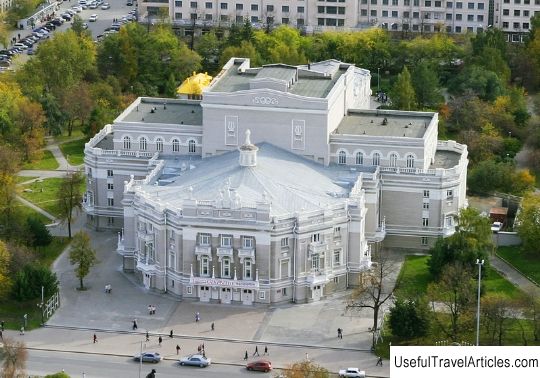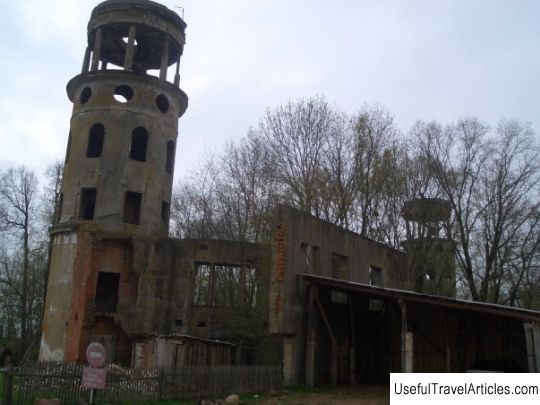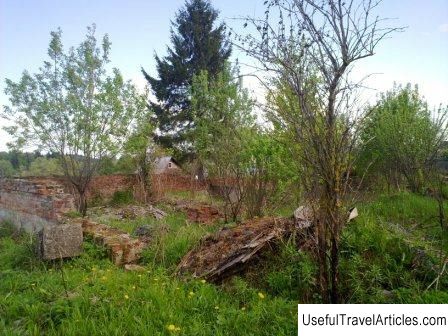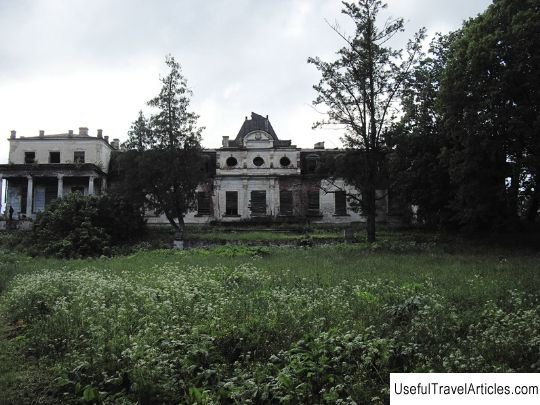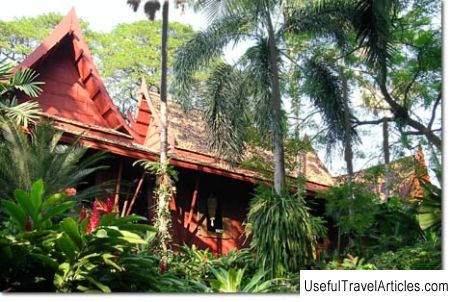House-estate of the Valuevs description and photo - Russia - North-West: Island
Rating: 9,8/10 (1654 votes) 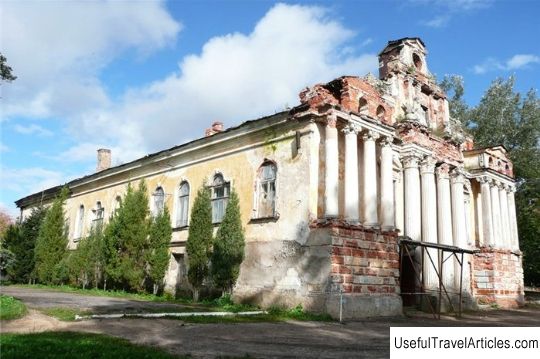
House-estate of the Valuevs description and photos - Russia - North-West: Island. Detailed information about the attraction. Description, photos and a map showing the nearest significant objects. Photo and descriptionOne of the most famous Pskov noble families is the name - Valuevs. The Valuev family is of Lithuanian origin. One of the Valuevs, Ivan Semenovich, in the 17th century was the owner of land in the Velikie Luki district, and in the middle of the 18th century, the grandson of Ivan Semenovich (Stepan Mironovich) bought land in the Ostrovsky and Pskov counties, thereby expanding his possessions. Having retired with the rank of Major General, Stepan Mironovich Valuev, settled in the village of Zherebtsovo and began to energetically establish his economy. Built in 1764, the two-storey brick house-palace has survived to this day. Due to its chic architectural design, it has caused a lot of rumors. There is an opinion that this palace was built by Rastrelli himself, which, however, has not been documented. The Valuevs' house was rightfully considered the best in the immediate vicinity of the Island and has repeatedly served as a stopover for the night for high-ranking persons traveling across Russia and Europe. In 1780, Catherine II stayed at the Valuevs' estate for several days, later in 1840 Nicholas I stayed here. There is an opinion that A.S. Pushkin. According to rumors, not a single room in the house had a repetition in its decoration. Unfortunately, little remains of the former luxury: the pompous porticos were broken, the solemn staircases disappeared, stucco and sculptural details remained on only one end facade. The owners did not begin to build a temple in their own estate, and in 1767 they arranged and consecrated the house church of the Epiphany in the house. The church occupied only one small room, the height of the room reached seven meters, which made it possible to establish choirs for singers. Six canvases by the artist Drulier, a native of France, adorned the iconostasis. The Valuevs, who often hosted eminent guests and tsars, did not save money on the interior decoration of the palace: here you could see Chinese mosaics, mirrors, tiled stoves, paintings with fluttering ribbons and soaring cupids, gilded stucco molding. All works, both artistic and carved, were made by masters specially commissioned from St. Petersburg. The entourage also corresponded to the status of the owners: the park was a real work of landscape art, with mandatory planning elements and decorative attributes. Its elegant component was a small pond, the bottom of the pond was lined with tiles, as a result of which its water was striking with crystal transparency. An interesting and unusual detail of the park environment - the "living" sundial, was formed from twelve fir trees planted in a circle. The role of the “clockwise hand” was played by the tree located in the center. In 1865, the estate was inherited by the collegiate secretary Alexei Valuev, who made his own adjustments to the appearance of the house. The building was rebuilt: a portico with a balcony and a staircase descending to the river was attached to the main facade, which faces the Velikaya River. The staircase was decorated with stone sculptures of sphinxes. However, the estate reached its absolute prosperity under Alexander Alekseevich and Maria Ivanovna - his wife. Life on the estate proceeded comfortably and happily until the early fifties of the nineteenth century. In 1856, all of Valuev's property was seized for "wasteful and disorderly management of estates" - this was the beginning of the collapse. Debts grew, funds were not enough for the most necessary, the estate began to quickly decline. At the end of the nineteenth century, the estate was bought by S.M. Neklyudov, a large landowner at the time. After the revolution from 1917 to 1968, an orphanage was housed here, but nowadays the estate houses a vocational school.       We also recommend reading Dark Garden (Pimeaed) description and photos - Estonia: Narva Topic: House-estate of the Valuevs description and photo - Russia - North-West: Island. |
